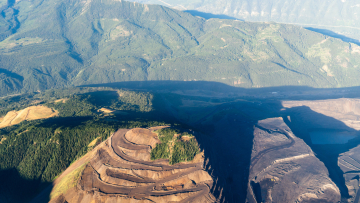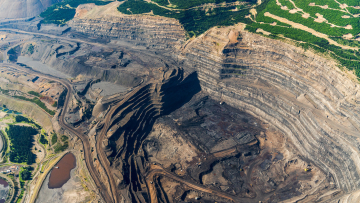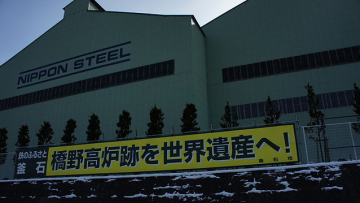
Project – Active
This profile is actively maintainedJulia Hovenier, Banks and Steel Campaigner, BankTrack

Project – Active
This profile is actively maintainedJulia Hovenier, Banks and Steel Campaigner, BankTrack
Why this profile?
The Elk Valley metallurgical coal mines in Canada have been polluting the water, and threatening the culture and livelihood of Indigenous communities for decades, due to their use of the Mountain Top Removal coal mining method. Glencore bought these mines in 2024, and plans to expand one of them (the Fording River Mine), arguing that the coal will be used for steel, making it less harmful for the climate. However, no matter what sector coal is mined and burned for, it is equally bad for communities and the climate.
What must happen
Banks should not finance Glencore, as a company that continues to plan to expand its coal mining activities. In particular, banks should not finance Glencore unless the company:
-
Cancels the Fording River mine expansion project
-
Works with workers and communities to develop asset-by-asset just transition plans for the closure of all four mines in the Elk Valley Complex, as well as the coal export terminal in the Port of Vancouver by 2050.
| Sectors | Coal Mining , Iron and Steel Manufacturing |
| Location |
|
| Status |
Planning
Design
Agreement
Construction
Operation
Closure
Decommission
|
| Website | https://www.glencore.ca/en/evr |
The Elk Valley metallurgical coal mines are a complex of four mines – Elkview mine, Fording River mine, Greenhills mine, Line Creek mine – located in British Columbia, Canada. They are operated by Elk Valley Resources, a subsidiary of the Swiss mining company Glencore. Elk Valley Resources also owns a 46% stake in the Neptune Coal Export terminal in the Vancouver port. In 2022 the mines produced 21.5 million tonnes of metallurgical coal. In November 2023, Glencore bought Elk Valley Resources from Canadian miner Teck Resources for $9 billion. The sale was approved by Canadian regulators in July 2024, granting Glencore a 77-per-cent stake in the mines. Japan’s Nippon Steel Corporation and South Korea’s POSCO have already gained a 20% and a 3% stake in the mines, respectively.
Impact on human rights and communities
Contaminating Indigenous waters across borders The fish populations south of the Elk Valley mines hold cultural and spiritual significance for the Ktunaxa Nation, which includes four First Nations in British Colombia, as well as the Confederated Salish and Kootenai Tribes in Montana and the Kootenai Tribe of Idaho. The pollution from the Elk Valley mines is threatening these fish populations. Members of the Ktunaxa Nation are watching as their sources of food and income become contaminated by high levels of selenium leaching from the waste rock of the Elk Valley mines, which can have serious health effects for humans in excessive exposure. The Ktunaxa Nation has been advocating for the Canadian and US government to look into and regulate the pollution since 2012. After nearly 10 years of advocacy by the Ktunaxa Nation and local groups, in March 2024 the International Joint Commission, a multilateral body of the US and Canada, launched a 2-year study to assess and eventually mitigate pollution from the mines. This was despite lobbying by the former owners of the mine, Teck Resources, and by the government of British Colombia, against the study.
Contaminating drinking water Pollution from the Elk Valley mines has seeped into the secondary drinking water wells of neighbouring town Fernie. The city found that the levels of selenium exceeded provincial water quality guidelines, and as a result is having to investigate a new backup water supply.
Cross-border toxic air pollution A July 2024 study found that toxic coal dust from the blasting, and transportation activities in the Elk Valley mines was causing a cloud of pollution to travel into Alberta communities 60 km away. The coal dust contains “PACs” - a toxic substance found in fossil fuels that can cause lung cancers, cardiovascular disease, frequency of birth defects, and reduced quality of life. At the moment, Glencore does not monitor PACs in its air quality monitoring.
Impact on climate
Perpetuating coal-based steel The steel industry is responsible for 11% of global CO2 emissions due to its reliance on coal. According to the International Energy Association (IEA), in order to reach the goals of the Paris Agreement, metallurgical coal production will need to fall 90% by 2050. However, none of the Elk Valley mines have a plan to phase down production. In fact, contrary to what is needed, Elk Valley Resources is also planning to expand its Fording River Mine so that it can continue mining there into the early 2070s. This is in spite of a clear call from the IEA that no new coal mine expansions are needed, as existing mines are sufficient to meet coking coal demand through 2050. By investing in coal mining for steel until 2070, Elk Valley Resources, and its eventual owners, are betting on a fossil steel future that the planet cannot afford. According to an analysis by SteelWatch, continued use of coal in steel making would consume almost a quarter of the planet’s remaining carbon budget for 1.5°C.
Methane emissions Drastically reducing methane emissions is key to limiting global warming to 1.5°C. Although methane only stays in the atmosphere for around nine to 12 years, it has a warming impact 84 times that of CO2 over a 20-year period. Metallurgical coal mines are a major source of methane emissions. Global Energy Monitor estimates that the methane emissions from the four Elk Valley mines total 119.2 million cubic meters per year, adding the equivalent of 6.5 million tons of CO2 over 20 years.
Impact on nature and environment
Destructive Mountain Top Removal methods decimate fish populations The Elk Valley mines use the controversial Mountain Top Removal method, where the top of the mountain is blown off to access the coal seam, and the waste rock is dumped into the valley. The waste rock from mining has polluted the waterways with selenium, which causes reproductive failures and deformities in fish, birds and amphibians. A 2023 United States Geological Survey study found selenium concentrations in the Elk River have increased 551% in the past four decades. As a result, fish populations are dying off fast. Between 2017 and 2020, the trout population downstream of the mines declined 93%.
Glencore, POSCO, and Nippon Steel did not receive direct debt financing for the acquisition of these mines. However, commercial banks were involved as financial advisers in the acquisitions: Barclays advised Teck Resources, while Goldman Sachs and Bank of Montreal advised Glencore.
You can see a full list of Glencore's financiers here.


